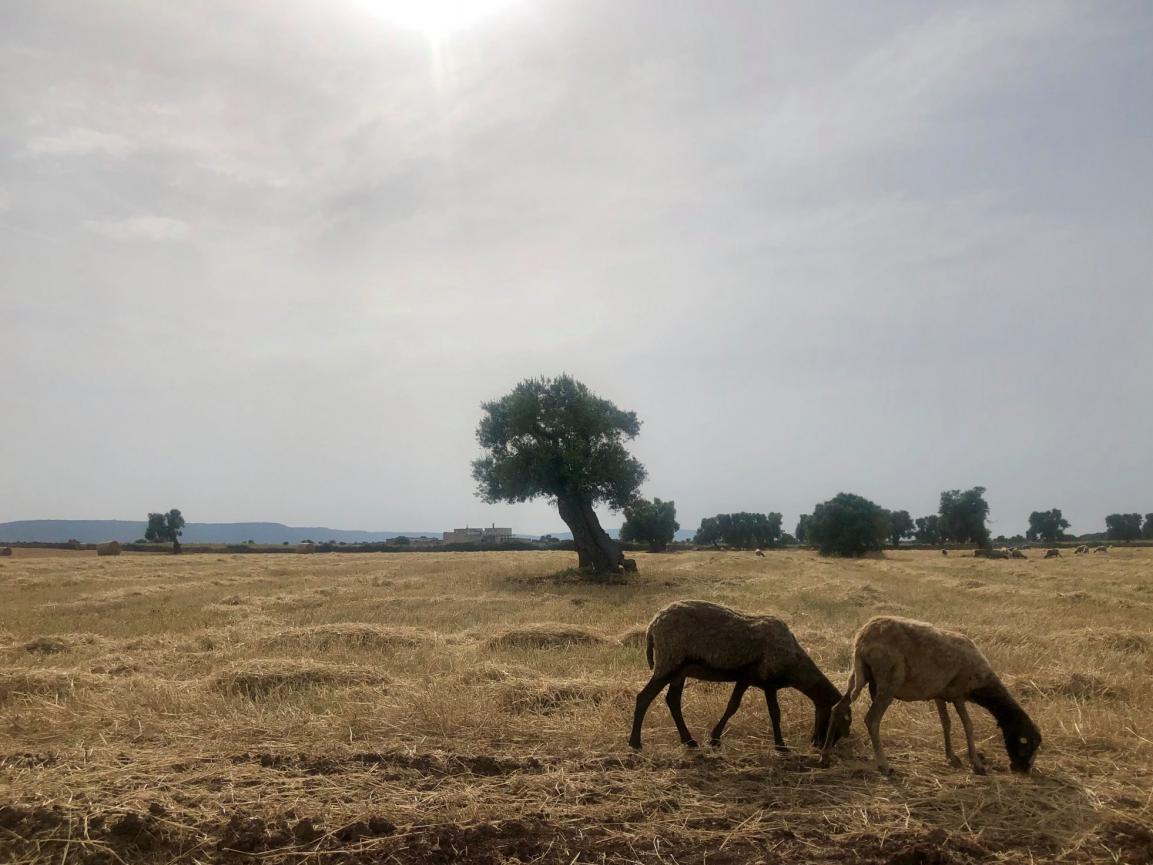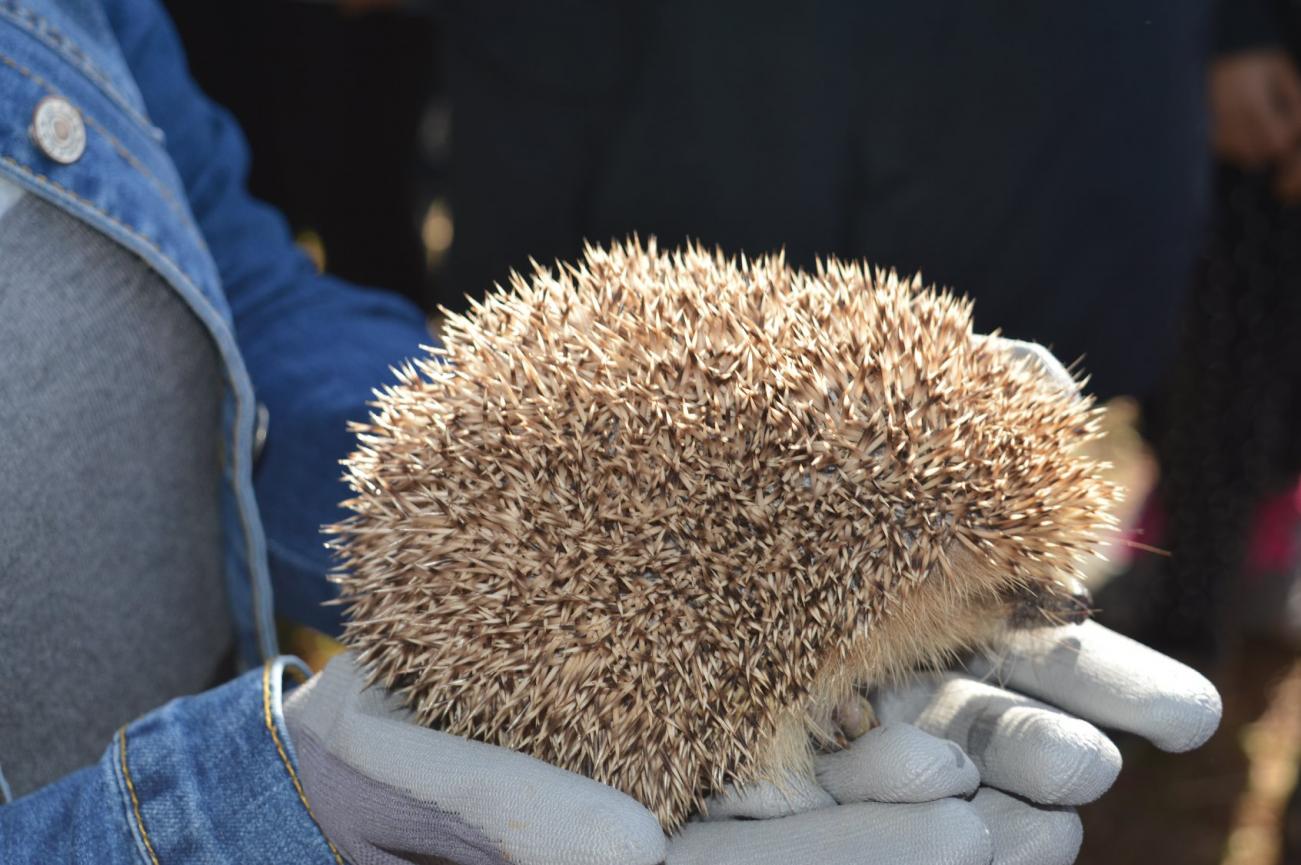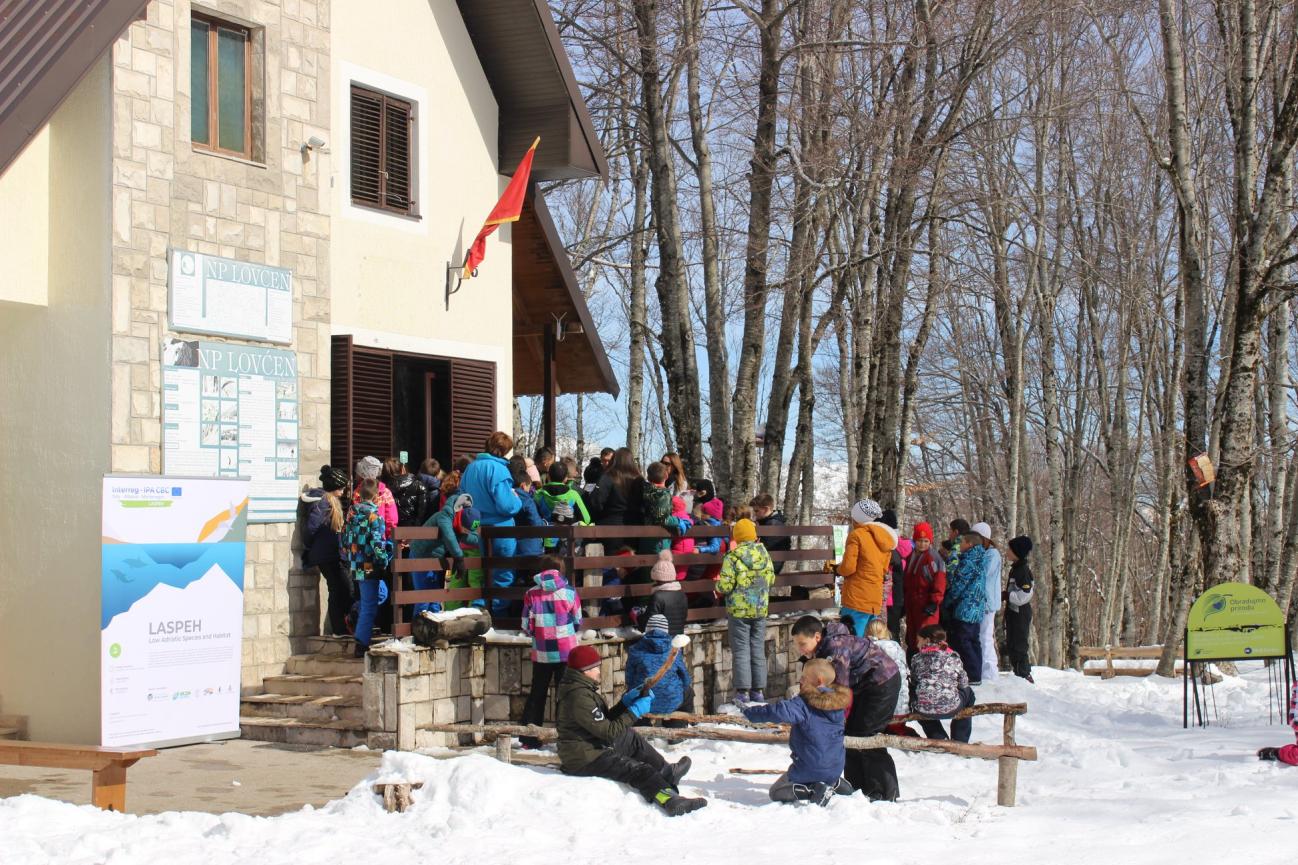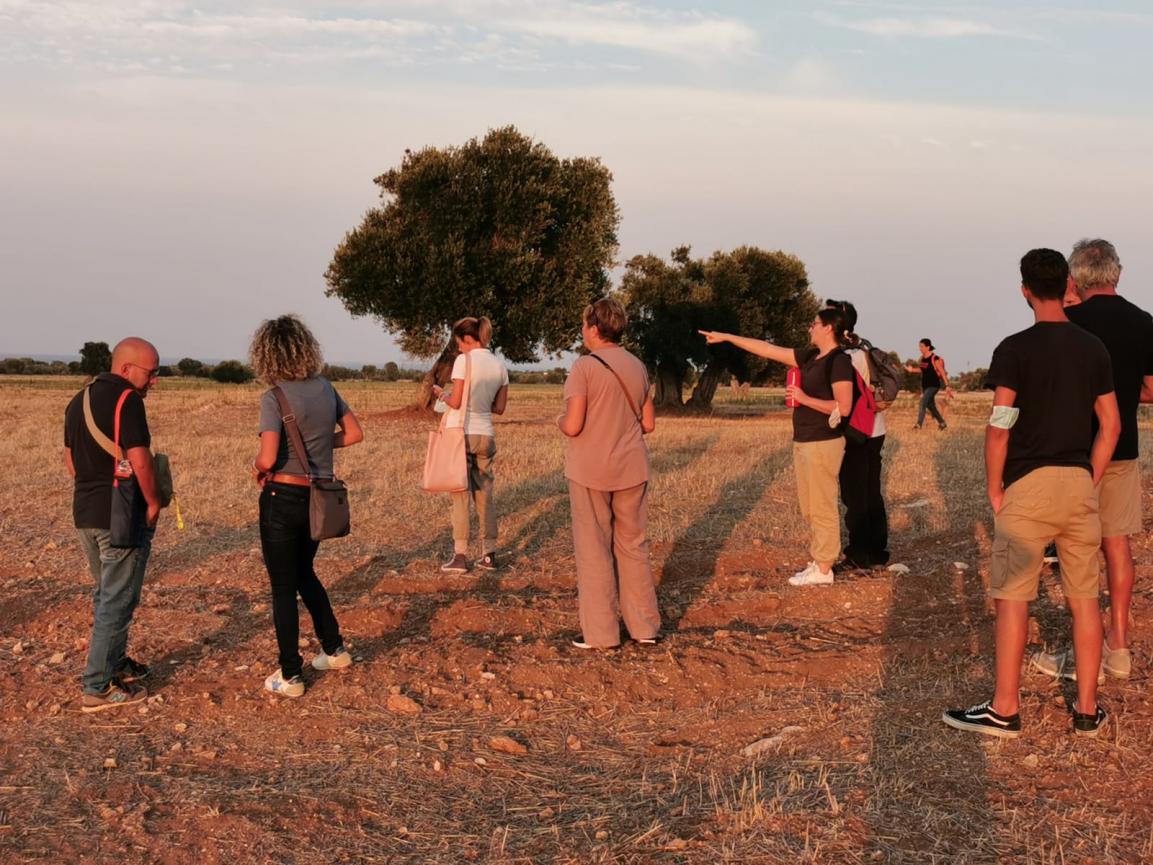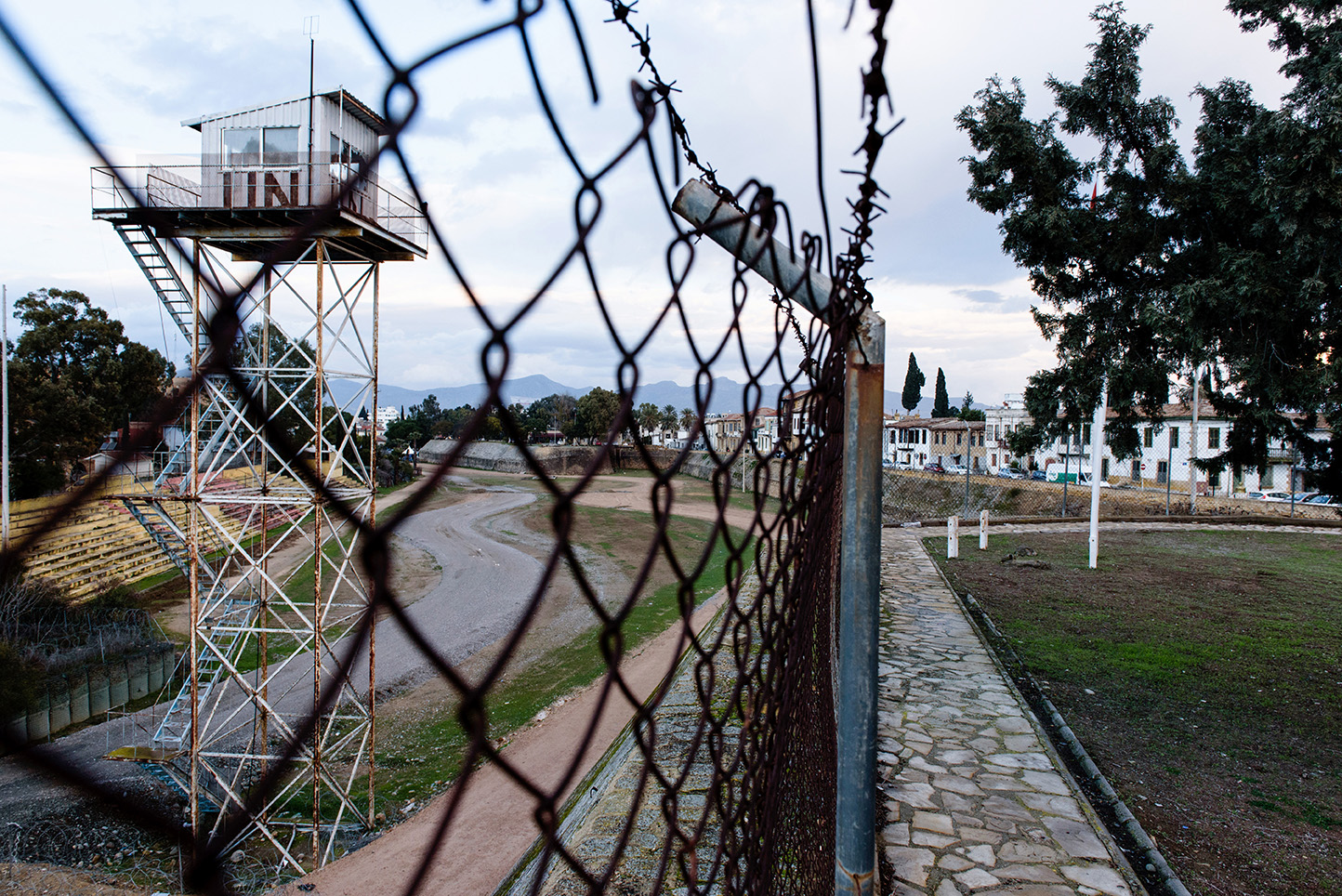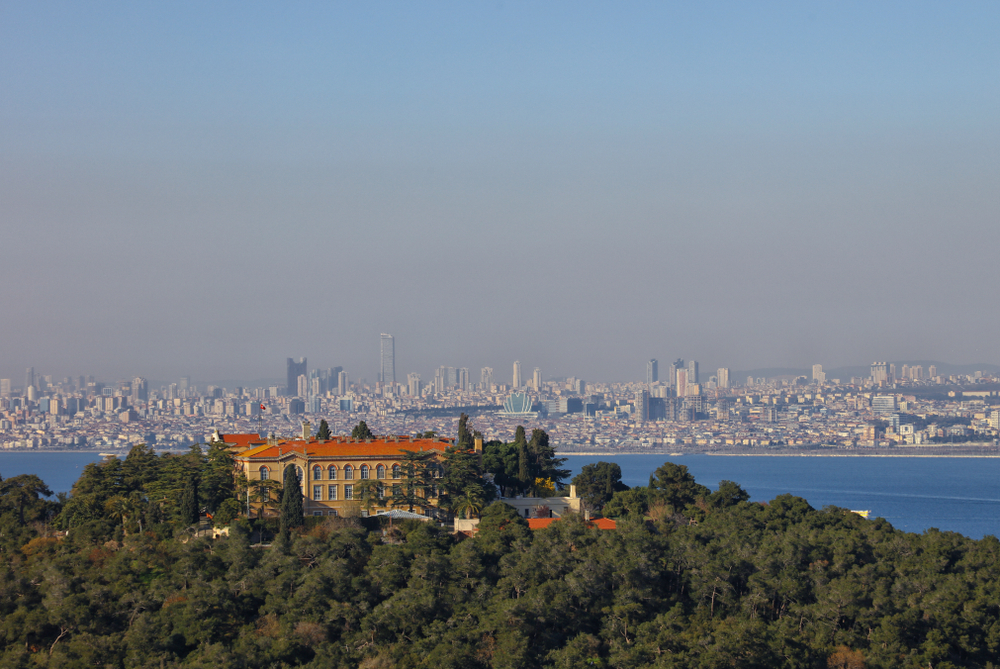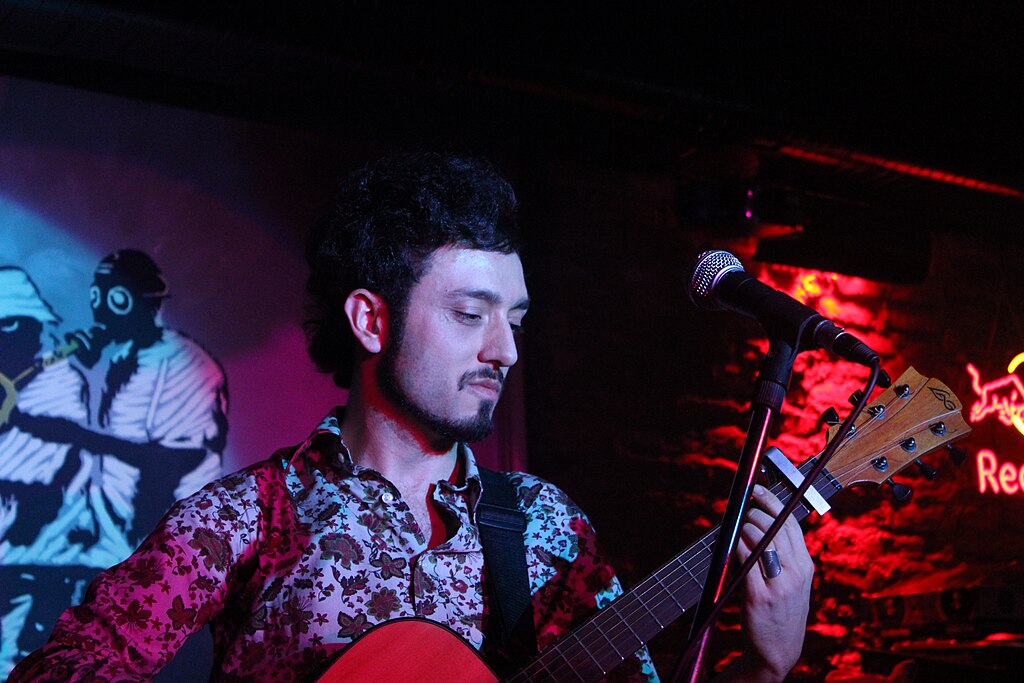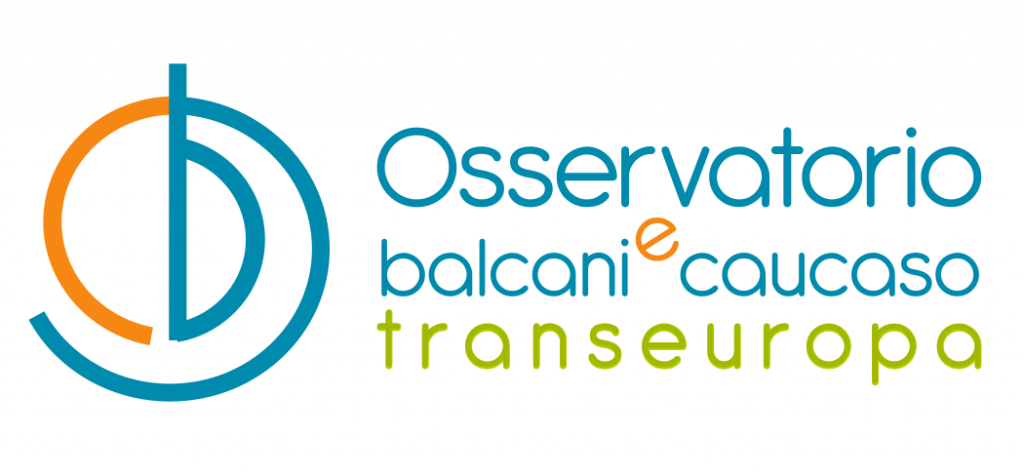Albania, Italy, Montenegro |
Southern Adriatic: innovate, connect, and grow sustainably
In the Southern Adriatic, cross-border cooperation provides essential value added for protecting biodiversity. Shared and coordinated conservation actions between multiple countries are a strategic response to environmental challenges that transcend political boundaries
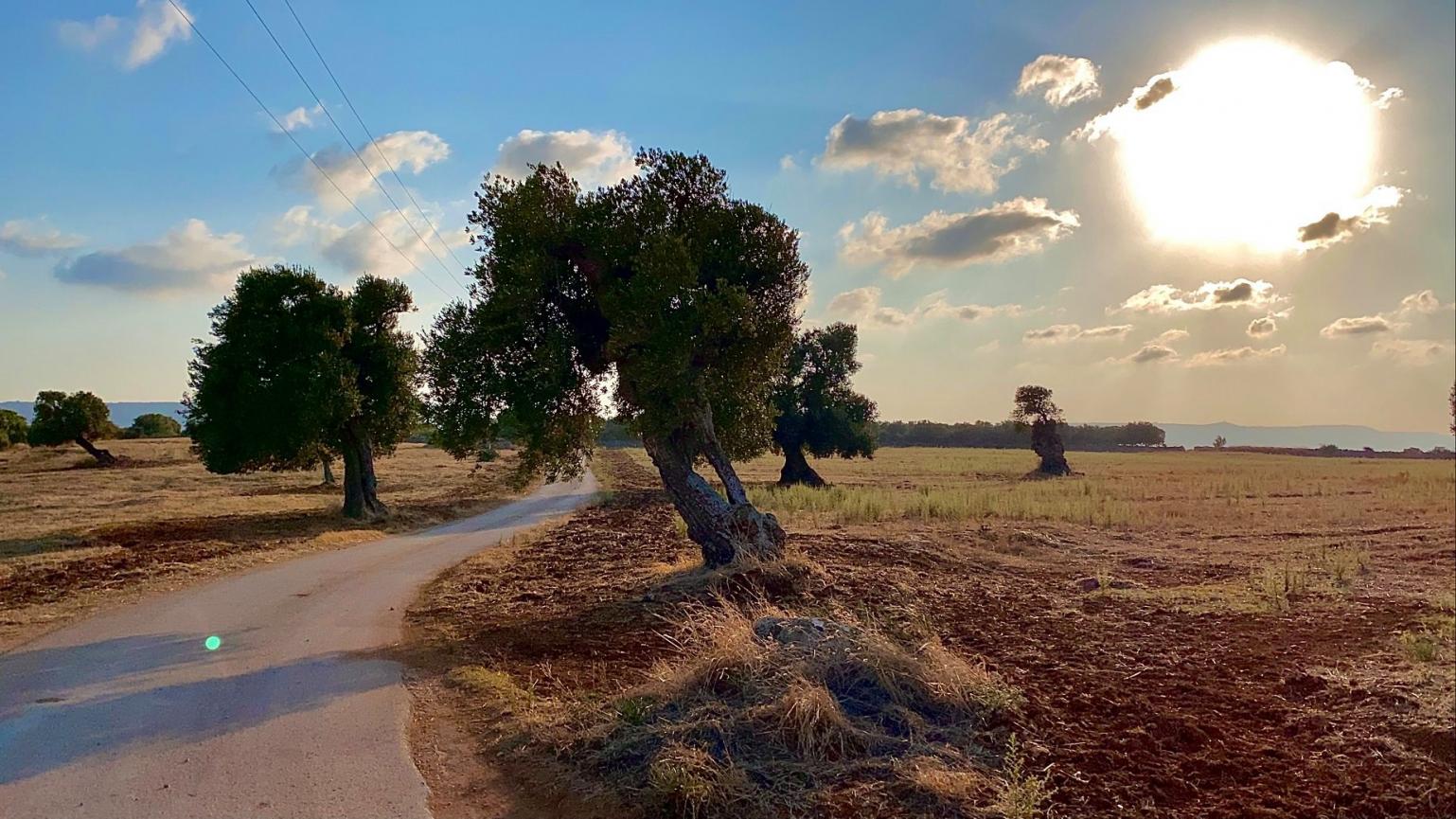
Southern-Adriatic-innovate-connect-and-grow-sustainably
© LASPEH project
The Southern Adriatic is home to a precious ecosystem rich in biodiversity and unique landscapes. Today, many of this region’s animal and plant species are threatened by pollution and the increasingly destructive effects of climate change.
To address these challenges, various local entities are joining forces through joint environmental protection initiatives, often supported by European Territorial Cooperation programs. These projects promote shared strategies for the conservation of natural habitats and the protection of wildlife and botanical heritage.
One example is LASPEH , a project co-financed by the European cross-border cooperation program between Albania, Italy, and Montenegro (Interreg IPA South Adriatic ). Its primary objective was to combat biodiversity loss in the southern Adriatic by developing a common strategy for the protection of natural and landscape heritage, including some species and habitats covered by the European Habitats Directive (92/43/EEC) and Birds Directive (79/409/EEC).
The project involved six partners: the Regional Natural Park of the Coastal Dunes from Torre Canne to Torre San Leonardo, as the lead partner; the National Agency for Protected Areas (NAPA) of Albania; the public company Montenegro National Parks; the Regional Natural Reserves of the Eastern Taranto Coast; the Regional Natural Park "Litorale di Ugento" (Ugento Coast) in Puglia; and the WWF Oasis of Guardiaregia-Campochiaro in Molise.
We explored this initiative in depth with Annarita Angelini, president of the "Coastal Dunes from Torre Canne to Torre S. Leonardo" Regional Natural Park.
What were the project’s results? Is there one in particular that you consider a significant success?
The LASPEH project has generated numerous concrete results, but the most significant is undoubtedly the drafting and signing of the Joint Transnational Strategy for the management of habitats and species in Natura 2000 sites. This document is not merely a technical development, but rather an actual operational tool shared by all project partners, capable of guiding coordinated conservation actions even beyond administrative boundaries.
This protocol is particularly valuable because it consolidates a collaborative network that continues to produce effects even after the project’s conclusion, strengthening the synergies between Italy, Albania, and Montenegro. In a fragile environmental context like that of the southern Adriatic, establishing a network between management bodies and replicable governance is probably the most lasting and innovative legacy of the LASPEH project.
The process of collaboration and discussion has also generated strong relationships and a shared vision that has translated into new projects, a legacy that goes beyond the initial objectives and continues to generate value through cooperation between territories.
How important, in your opinion, is communication for engaging local communities and raising public awareness about nature and biodiversity protection?
Communication is fundamental – indeed, I would say essential – when it comes to nature and biodiversity protection, especially if we want to achieve authentic and lasting engagement with local communities. Environmental awareness does not arise spontaneously: it must be cultivated, stimulated, and built through ongoing, accessible, and inclusive dialogue.
For this reason, in the project, we wanted to accompany each technical and scientific intervention with opportunities for meetings, training, and discussion aimed at citizens, students, local operators, and public decision-makers. The objective was twofold: on the one hand, explaining why protecting a habitat or species is important not only for the environment, but also for the well-being of the community; on the other hand, it promotes a sense of belonging and shared responsibility, because conservation cannot be imposed from above but must be experienced and supported from below.
Did the project include specific opportunities for engaging local communities? If so, how? What was the response?
Yes, the LASPEH project included specific and structured opportunities for engaging local communities, including a cross-border awareness campaign with public events, field activities, educational workshops, visual communication tools, and opportunities for dialogue with citizens, students, associations, and local administrators.
This commitment has materialized in numerous initiatives carried out in the areas involved, such as the Dune Costiere Regional Natural Park, organized guided tours open to the community, educational meetings with elementary schools and universities, and awareness-raising activities with local stakeholders on protected species and habitats. The feedback was very positive, with broad, cross-sectional, and enthusiastic participation.
How did the idea of collaborating with Albanian and Montenegrin partners arise? Had you had previous experiences together?
The idea of collaborating with Albanian and Montenegrin partners arose from a vision already matured within the Dune Costiere Regional Natural Park, which had previously participated in several international cooperation experiences with European projects funded under the Neighborhood and Territorial Cooperation programs.
These experiences strengthened the Park’s awareness of the strategic value of cross-border cooperation, especially in addressing environmental challenges that transcend political boundaries. Within LASPEH, it was deemed appropriate to consolidate and expand the dialogue with institutions in neighboring countries, particularly Albania and Montenegro, with the aim of building a shared vision for biodiversity protection in the Adriatic basin. The collaboration therefore developed as a natural continuation of an already existing process, based on the belief that comparing different experiences and contexts can generate more effective, shared, and sustainable solutions over time.
How do you evaluate this experience of transnational cooperation?
The experience was positive, both operationally and in terms of human and institutional interaction between partners from different countries. Personally, I can say that it was a valuable opportunity to build relationships of trust, strengthen expertise, and develop a common strategy on complex issues such as biodiversity protection and the management of Natura 2000 sites. However, this assessment is not limited to the perception of those who worked directly on the project: LASPEH has been recognized nationally as a virtuous example in the context of cohesion policies.
The Agency for Territorial Cohesion has selected the project as a FARO project in the Catalogue of Good Practices in the Environment, acknowledging its ability to effectively combine environmental protection, shared governance, and local participation. This recognition confirms that the approach adopted by the LASPEH partnership, based on cooperation between Italy, Albania, and Montenegro, is considered replicable, innovative, and consistent with the European Sustainable Development Goals. In this sense, LASPEH was not only a conservation project, but also a concrete demonstration of how international cooperation can translate into tangible results and management models capable of generating value over time.
What value added does the transnational dimension bring to your work? Do you often participate in projects of this type?
The transnational dimension adds essential value to our work. Engaging with partners from other countries allows us to move beyond a local perspective, often too tied to limited regulatory or operational contexts, and to access a broader and more diverse set of knowledge, practices, and solutions. Working with other protected area management bodies, public authorities, and local stakeholders in different contexts allows us to enrich our vision and strengthen the effectiveness of our actions.
Our experiences demonstrate that the transnational dimension is not simply an accessory, but an integral part of our territorial management and development strategy, in which European cooperation is a fundamental tool for innovating, connecting, and growing sustainably.
Has working with partners from non-EU countries presented any challenges?
Working with partners from non-EU countries, as in the cases of Albania and Montenegro, has not been an insurmountable obstacle; on the contrary, it has often proven to be a valuable opportunity for mutual enrichment. Any challenges are not attributable to the lack of European integration per se, but rather to differences in regulatory and administrative frameworks, which sometimes require greater coordination. However, these challenges can largely be overcome when a common vision is shared and a climate of trust and collaboration is achieved.
In our case, the real limitation does not lie in the transnational dimension or in the fact that some partners are not part of the EU, but rather in the daily difficulties that many protected area management bodies face. At the local level: limited financial resources, staff shortages, and an often limited organizational structure. It is precisely in this context that cooperation projects play a fundamental role. Thanks to these projects, small organizations like ours can access up-to-date information, management models tested in other countries, training tools, and financial resources that would otherwise be difficult to access. Transnational cooperation, even with non-EU partners, therefore becomes a concrete opportunity to overcome structural limitations and strengthen the operational and strategic capacities of local actors.
This publication was produced as part of the Cohesion4Climate project, co-funded by the European Union. It also draws on research activities supported by the project "The Contribution of Communities of Practice for the European Integration of the Balkans," co-funded by the Italian Ministry of Foreign Affairs and International Cooperation.
Tag: Cohesion for Climate | CoP-CET
Southern Adriatic: innovate, connect, and grow sustainably
In the Southern Adriatic, cross-border cooperation provides essential value added for protecting biodiversity. Shared and coordinated conservation actions between multiple countries are a strategic response to environmental challenges that transcend political boundaries

Southern-Adriatic-innovate-connect-and-grow-sustainably
© LASPEH project
The Southern Adriatic is home to a precious ecosystem rich in biodiversity and unique landscapes. Today, many of this region’s animal and plant species are threatened by pollution and the increasingly destructive effects of climate change.
To address these challenges, various local entities are joining forces through joint environmental protection initiatives, often supported by European Territorial Cooperation programs. These projects promote shared strategies for the conservation of natural habitats and the protection of wildlife and botanical heritage.
One example is LASPEH , a project co-financed by the European cross-border cooperation program between Albania, Italy, and Montenegro (Interreg IPA South Adriatic ). Its primary objective was to combat biodiversity loss in the southern Adriatic by developing a common strategy for the protection of natural and landscape heritage, including some species and habitats covered by the European Habitats Directive (92/43/EEC) and Birds Directive (79/409/EEC).
The project involved six partners: the Regional Natural Park of the Coastal Dunes from Torre Canne to Torre San Leonardo, as the lead partner; the National Agency for Protected Areas (NAPA) of Albania; the public company Montenegro National Parks; the Regional Natural Reserves of the Eastern Taranto Coast; the Regional Natural Park "Litorale di Ugento" (Ugento Coast) in Puglia; and the WWF Oasis of Guardiaregia-Campochiaro in Molise.
We explored this initiative in depth with Annarita Angelini, president of the "Coastal Dunes from Torre Canne to Torre S. Leonardo" Regional Natural Park.
What were the project’s results? Is there one in particular that you consider a significant success?
The LASPEH project has generated numerous concrete results, but the most significant is undoubtedly the drafting and signing of the Joint Transnational Strategy for the management of habitats and species in Natura 2000 sites. This document is not merely a technical development, but rather an actual operational tool shared by all project partners, capable of guiding coordinated conservation actions even beyond administrative boundaries.
This protocol is particularly valuable because it consolidates a collaborative network that continues to produce effects even after the project’s conclusion, strengthening the synergies between Italy, Albania, and Montenegro. In a fragile environmental context like that of the southern Adriatic, establishing a network between management bodies and replicable governance is probably the most lasting and innovative legacy of the LASPEH project.
The process of collaboration and discussion has also generated strong relationships and a shared vision that has translated into new projects, a legacy that goes beyond the initial objectives and continues to generate value through cooperation between territories.
How important, in your opinion, is communication for engaging local communities and raising public awareness about nature and biodiversity protection?
Communication is fundamental – indeed, I would say essential – when it comes to nature and biodiversity protection, especially if we want to achieve authentic and lasting engagement with local communities. Environmental awareness does not arise spontaneously: it must be cultivated, stimulated, and built through ongoing, accessible, and inclusive dialogue.
For this reason, in the project, we wanted to accompany each technical and scientific intervention with opportunities for meetings, training, and discussion aimed at citizens, students, local operators, and public decision-makers. The objective was twofold: on the one hand, explaining why protecting a habitat or species is important not only for the environment, but also for the well-being of the community; on the other hand, it promotes a sense of belonging and shared responsibility, because conservation cannot be imposed from above but must be experienced and supported from below.
Did the project include specific opportunities for engaging local communities? If so, how? What was the response?
Yes, the LASPEH project included specific and structured opportunities for engaging local communities, including a cross-border awareness campaign with public events, field activities, educational workshops, visual communication tools, and opportunities for dialogue with citizens, students, associations, and local administrators.
This commitment has materialized in numerous initiatives carried out in the areas involved, such as the Dune Costiere Regional Natural Park, organized guided tours open to the community, educational meetings with elementary schools and universities, and awareness-raising activities with local stakeholders on protected species and habitats. The feedback was very positive, with broad, cross-sectional, and enthusiastic participation.
How did the idea of collaborating with Albanian and Montenegrin partners arise? Had you had previous experiences together?
The idea of collaborating with Albanian and Montenegrin partners arose from a vision already matured within the Dune Costiere Regional Natural Park, which had previously participated in several international cooperation experiences with European projects funded under the Neighborhood and Territorial Cooperation programs.
These experiences strengthened the Park’s awareness of the strategic value of cross-border cooperation, especially in addressing environmental challenges that transcend political boundaries. Within LASPEH, it was deemed appropriate to consolidate and expand the dialogue with institutions in neighboring countries, particularly Albania and Montenegro, with the aim of building a shared vision for biodiversity protection in the Adriatic basin. The collaboration therefore developed as a natural continuation of an already existing process, based on the belief that comparing different experiences and contexts can generate more effective, shared, and sustainable solutions over time.
How do you evaluate this experience of transnational cooperation?
The experience was positive, both operationally and in terms of human and institutional interaction between partners from different countries. Personally, I can say that it was a valuable opportunity to build relationships of trust, strengthen expertise, and develop a common strategy on complex issues such as biodiversity protection and the management of Natura 2000 sites. However, this assessment is not limited to the perception of those who worked directly on the project: LASPEH has been recognized nationally as a virtuous example in the context of cohesion policies.
The Agency for Territorial Cohesion has selected the project as a FARO project in the Catalogue of Good Practices in the Environment, acknowledging its ability to effectively combine environmental protection, shared governance, and local participation. This recognition confirms that the approach adopted by the LASPEH partnership, based on cooperation between Italy, Albania, and Montenegro, is considered replicable, innovative, and consistent with the European Sustainable Development Goals. In this sense, LASPEH was not only a conservation project, but also a concrete demonstration of how international cooperation can translate into tangible results and management models capable of generating value over time.
What value added does the transnational dimension bring to your work? Do you often participate in projects of this type?
The transnational dimension adds essential value to our work. Engaging with partners from other countries allows us to move beyond a local perspective, often too tied to limited regulatory or operational contexts, and to access a broader and more diverse set of knowledge, practices, and solutions. Working with other protected area management bodies, public authorities, and local stakeholders in different contexts allows us to enrich our vision and strengthen the effectiveness of our actions.
Our experiences demonstrate that the transnational dimension is not simply an accessory, but an integral part of our territorial management and development strategy, in which European cooperation is a fundamental tool for innovating, connecting, and growing sustainably.
Has working with partners from non-EU countries presented any challenges?
Working with partners from non-EU countries, as in the cases of Albania and Montenegro, has not been an insurmountable obstacle; on the contrary, it has often proven to be a valuable opportunity for mutual enrichment. Any challenges are not attributable to the lack of European integration per se, but rather to differences in regulatory and administrative frameworks, which sometimes require greater coordination. However, these challenges can largely be overcome when a common vision is shared and a climate of trust and collaboration is achieved.
In our case, the real limitation does not lie in the transnational dimension or in the fact that some partners are not part of the EU, but rather in the daily difficulties that many protected area management bodies face. At the local level: limited financial resources, staff shortages, and an often limited organizational structure. It is precisely in this context that cooperation projects play a fundamental role. Thanks to these projects, small organizations like ours can access up-to-date information, management models tested in other countries, training tools, and financial resources that would otherwise be difficult to access. Transnational cooperation, even with non-EU partners, therefore becomes a concrete opportunity to overcome structural limitations and strengthen the operational and strategic capacities of local actors.
This publication was produced as part of the Cohesion4Climate project, co-funded by the European Union. It also draws on research activities supported by the project "The Contribution of Communities of Practice for the European Integration of the Balkans," co-funded by the Italian Ministry of Foreign Affairs and International Cooperation.
Tag: Cohesion for Climate | CoP-CET

